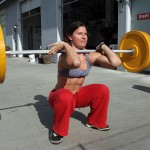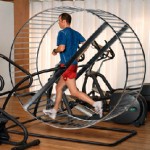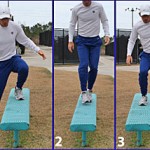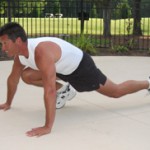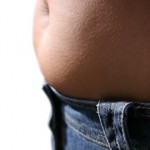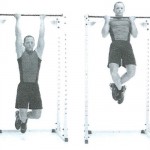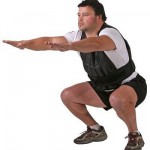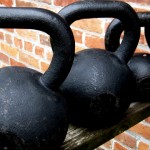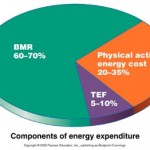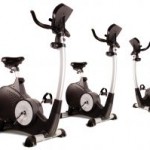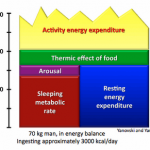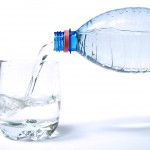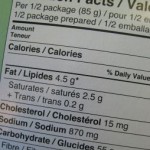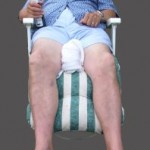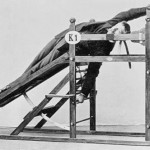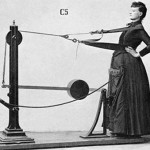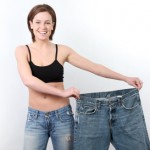Hi & Welcome back!
A few of you have been in touch with some questions about exercise & conditioning and where the truth lies so I though that I’d work our way through a few of the more common ones…
Myth #1 – Lifting weights will make Women look like a male Body Builder You’ll get big, bulky & ugly…
I wish that I had a $ for everytime that I have heard this one! It is a common concern of everywoman who joins a gym or reads about the importance of muscle in keeping fat levels down and metabolism high. Many believe that lifting challenging weights ( the best & only way to get quick & lasting results) will see them looking like a male bodybuilder in a few workouts time…
Even worse it is a myth constantly reinforced and perpetrated by Aerobics, Spin, Tai Chi,Yoga, Zumba & Pilates instructors who should know better. A lot better.
Ladies – you DON’T have to worry about ending up looking like the Hulk! Seriously you don’t.
Why??
Well the truth is not only have female bodybuilders been training at elite levels for years but they have also ingested a large amount of anabolic steroids in order to increase their muscle mass. Non-steroid using women simply don’t have enough natural testerone to develop huge masses of muscle. You DO have sufficient naturally occurring testerone so that if you train intelligently you will develop strength, and curves.
Similarly for men – if you are not using steroids and you are past your teen years (the only time in a male’s life when his body has the perfect anabolic environment) then you will have to train for years to build a lot of muscle mass – even with a man’s naturally higher levels of testerone. (although men’s T-levels are dropping in the Western world – but that’s a topic for another blog…)
Men & Women who are not drug assisted have to work damn hard for every ounce, every gram of additional muscle they gain through exercise. You don’t get leaner, curvier and stronger without working for it.
The benefits of anyone using a strategically sound workout regime are many, here are a few for women to consider:
- Weight training increases bone density and is still the best way to avoid osteoarthritis
- You become & stay leaner because your metabolism becomes reconditioned and functions at a higher rate.
- You get stronger and this carries over in everyday life and benefits everything from carrying groceries, hugging your kids, wresting your loved ones, lugging a TV to another room or just doing the necessary household chores. Research has also shown that becoming stronger reduces the incidence of falls in older women…
- If you are a female athlete strength training reduces the incidence of injuries.
- Your posture improves because the ‘anchoring’ muscles & tendons get stronger. You look more confident & alive, not stoped and old…
- You become more selfconfident – few people in our comunity take the steps necessary to get in charge of their appearence & health but if you do not only do you feel more in charge of your life but you know that you are capable of things most folk can’t. My (much) better half Lynne is a 5’2″ Blonde who can deadlift 90+ kilos for reps and leg press a 150kg for a 100 reps. Not many men can do that (and you should see the looks on the faces of the males in the gym when she does…priceless) Now I am not suggesting that you want ot or have to move weights like Lynne does (she is competitve by nature), just that by using an intelligent strength training regime you will be able to do things most folk can’t and this will give your confidence a real boost!!
- You look better and have a better shape. The usual path to fat loss for many women is long slow cardio and starvation diets which destroy muscle and leave you a smaller fat person. Strength training gives you curves and transform the composition of your body
- You just look better dammit!!
Myth #2: Long steady cardio in the ‘fat buring zone’ is what you have to do to burn fat
Think about this – everyday 1000’s of folk get in their car & drive to the gym to ride a bike walk a treadmill or climb some stairs…
The issue here is not with the idea of using your aerobic energy system to stimulate fat loss. Cardio as in moving your body using large numbers of muscles, is a credible way to burn fat. The problem is that if you live in the real world long slow steady cardio takes a lot of time and is not that efficient. Plus its boring. If you have a life to live outside the gym then tradional slow cardio is not the best way to lose fat and get leaner.
The main issues with traditional cardio, often referrred to as ‘Chronic’ cardio by enlightened trainers) are:
- It is time consuming and offers a poor return in terms of fat loss and health benefits for the time invested.
- To burn 3500 claories (the amount in a pound of fat) you’d have to run at a 6 minute mile pace for 5 hours. So slow cardio can & does burn claories – but to burn a lot of calories you have to do it for a long time.
- Then because you have been going steady as soon as you stop your metabolism drops right back to where it was before you hopped on the treadmill and you can forget about there being any significant post-exercise calorie burn.
- Your body adapts to exercise induced stress. Very quickly. Particularly with long steady exercise. Just like water always travels downhill, your body is always looking for ways to conserve energy and making movement as efficient as possible is one way it does this.
- Unless you subject your body to exercise which carries a high metabolic cost your body adjusts and becomes more efficient at any exercise in short order.
- When we want to lose fat we don’t want efficiency we want chaos and steep learning curves and inefficient body action. The more efficient your body becomes at any exercise the less energy it requirs to perform it. Less energy burned equals more fat retained!
- Even HIIT training has to be changed around every few weeks as your body will adjust to it. With strength training it takes just 6 weeks for adaption & energy efficiency to occur…
- So with traditional cardio in order to get the same results from the same exercise, you have to invest more time for longer & longer periods.
- It just makes sense to use more using challenging cardio like sprints, bodyweight circuits or exercising using the Tabata protocol all work to keep your body off balance and raise the metabolic cost of exercise meaning more fat is burned.
- High injury rates – especially to the ankles, shins and knees. Any runner can attest to this, but so can any treadmill, stationary bike or stairclimber user. Long slow cardio promotes repetitive strain injuries – particulary on the weight bearing parts of our anatomy.
- Research has shown that every foot fall when running creates the equivalent of 2.5 to 3 times our bodyweight on thelanding foot, arch, ankle, shin & knee. A slightly deviated gait can result in hip injuries.
- Our bodies are designed to either move slowly over longdistances (like walking) or move rapidly over short ones (sprinting) – our joints, in our current historical times, seem to not be built to handle long periods of repetive running – especially on roads, pavements or treadmills. If you are carrying too much weight, the potential for injury just increases.
- Did I mention steadt traditional cardio is boring?
Okay – I have just junked the idea of chronic, long, slow steady cardio – so what works? Metabolic conditioning, more specifically metabolic conditioning using a HIIT protocol.
The HIIT stands for High Intensity Interval Training. The metabolic conditioning refers to exercises that combine elements of strength training with cardio. Performed correctly this rsults in short, sharp & very time efficient workouts that burn fat and lots of it. The metabolic cost ( calories burnt)of HIITMC is huge and the ‘afterburn’ – where your body keeps burning calories for hours after exercise ceases – is significantly high.
HIITMC when done properly will make your lungs feel like they are on fire, your heart is trying to climb up your throat and your body will want to return to its ‘normal’ state ASAP. In order to do this your body has to clear the fatigue products, rebuild affected muscle, replenish glycogen stores and a lot more besides. The only way it can achieve this is by ramping your metabolism up. Way up. In fact studies have shown a significantly elevated metabolisn for up to 38+ hours after this type of exercise session.
This means a couple of things – greater fat loss in less time than traditional cardio with the added benefits of strength training. HIIT style metabolic conditioning results in overall fat loss up to 220% that of traditional cardio.
If HIITMC is so good then why isn’t everyone using it?
There are a number of reasons why more people are not using HIIT MC for their fat loss:
- Most people still think that ‘Aerobics’ or traditional cardio is the best way to lose fat.
- Many Gyms & Personal trainers are in the business of keeping you coming back and don’t want to either deliver results too quickly or to scare you off. (Plus once you know how to do it you don’t need them or even their machines any more except for a bit of variety…)
- HIIT MC is hard work. Real hard work.
- If you are using a HIIT protocol correctly you won’t be having a chat to your work out buddy, or be able to read a magazine or change the song on your iPod. usually with HIITMC your focus is on getting to the end of the current timed interval and trying to get enough breath into your lungs.
Using HIITMC – your lungs burn, your muscles strain and your will is challenged. You will sweat. A lot. More than a lot. These are all good things as they show that you are getting your body to do what you want not allowing it to take the path of least resistance (which it prefers!)
A HIITMC session can be a simple as:
- Doing 5 rounds of 3 exercises with 1 minutes break between rounds – push ups followed by pull ups followed by bodyweight squats is the classic combo.
- Using ‘Ladders’ for exercises like burpees – do 1, stop, do 2, stop, do 3, stop. do 4, stop, do 5 etc until you do 10 then reverse the process and do 9, stop, do 8, stop until you get back to zero.
- Going to the beach, marking out 50 yards / metres and doing 10 sets of sprints with 1 minute (or less) break between sets.
- Do 10 sets of hill runs, resting only as long as it takes to walk back down between each set.
- Doing 200 kettlebell swings with a challenging weight only stopping long enough on the way to catch a few deep breaths.
- Use a leg press machine with a challenging weight and stay on it until you have completed a 100 reps.
- Do push presses with light dumb bells to a Tabata protocol (20 secs activity, 10 sec rest for 4 minutes straight – this is 1 set – do 3)
- Do a barbell complex – a series of exercises with the one weight done for set reps without putting the weight down or resting until completed. That is one set. Do 3 or 4sets . (eg 6 reps of each with a 20 kiol barbell – deadlift followed by clean followed by overhead press followed by rear squat followed by good morings. Rest 2 minutes repeat)
All of these are simple to do but not easy to accomplish. You should start off slowy and work up to the times and numbers suggested above. With any running begin by just jogging a few sets as your warm up. Depending upon how fit you are even this can be challenging…Then do some hamstring & quadricep stretches, ankle & knee circle and some hip swings to ensure your legs are ready – then go for it. You’ll hate me for it during the session and the next day or 2 but after 4 or 5 sessions you’ll be seeing strong results.
The real key here is to start slow, get command of the movement(s) and then do what you can, striving to add reps or distance to timed intervals each session depending upon the activity you have chosen. But give each interval, each set, each round your all – go at it 100% once you have mastered the activity and the fat will go.
Because of the metabolic costs involved never use HIITMC for more than 20 to 25 minutes per session or do more than 4 sessions a week (2 is good, 3 ideal) – if you do, you will move into detrimental effects due to the demands that HIITMC puts on your body especially in the first 8 – 10 weeks.
Bottomline – to lose fat, recompose your body, to get lean, to look better naked – YOU’VE GOT TO EARN IT!!
For other myths & ideas – don’t forget to get your free report! It’s waiting at the top right hand side of the page…
I’ll be back next time with a couple of other myths that need a touch up.
Be well.


